A Guide To Selecting a Breeder and a Puppy
Note: Leerburg formerly bred working bloodline German Shepherds until deciding to shift its focus towards producing dog training videos and courses alongside providing quality dog training equipment. This article was written when our breeding program was still active. While Leerburg no longer breeds working GSDs, we believe this article may still provide valuable information for those interested in starting their own breeding program.

No matter how much information I put in this article, it will never be enough. I have bred more than 300 litters of working bloodline German Shepherds over the past 27 years and I still learn something new all of the time. That's the beauty of dog training.
Selecting the Breeder
The selection process in picking a puppy begins with choosing a breeder that you trust and have confidence in. I cannot stress this enough. Some people breed because they have a sincere interest in producing top-quality dogs. Others will breed because they want to make a few extra dollars. Occasionally, there will be people who breed because it would be nice for the kids and they think their house pet will somehow become a better dog if it has a litter of pups before they neuter it.
The last place on earth to look for a puppy is in a pet store. Any breeder that is forced to sell his puppies to a pet store has no credibility. This only indicates he has no reputation as a breeder and nowhere else to sell his dogs. The majority of the dogs that end up in pet stores come from puppy mills. Puppy mills are a legitimate (despicable) business in many states. There are certain days of the week that we are not allowed to ship dogs out of the Delta office of the Minneapolis Airport because they are shipping so many puppies from "puppy mills" in Minnesota and Northern Iowa.
When you select a breeder, try and get a feel for his interest in the breed and his experience. Everyone that breeds has to start somewhere and just because this is the first or second litter a person has bred does not mean that this is a bad breeder. It is important that a person that is new to breeding should have been involved in dogs for a few years. There is no such thing as a 6-month wonder in the dog breeding business. Expertise in this area comes from experience and the only way to gain experience in this business is through a lot of hard work.
Working Line German Shepherds vs. Show Line German Shepherds
As a working dog breeder, I have a real hard time writing about this issue. For me, there is only one decision to make here. I have written an article about the difference between American and German bloodlines. But there is also a big difference between the German show line dogs and the German working line dogs, something a breeder will have to consider.
As a general rule, if you just want a pretty dog and have no interest in anything other than a good-looking house pet, a show line dog is fine. I think these dogs are very good-looking. The problem is they could not fight their way out of a wet paper bag. So if you're looking for a German Shepherd you can use for protection work, then make sure your dog is of a working line breed instead of a show line.
I am continually drawn back to a quote from the founder of the German Shepherd breed, Max von Stephanitz. In 1922, Max Von Stephanitz wrote in his book, "The breeding of shepherd dogs is the breeding of working dogs; and this must always be the aim, or we shall cease to produce shepherd dogs." That statement was true in 1922 and it is still true today. It will also be true a hundred years from today.
My advice is that if you talk to a breeder and they brag about all of the shows their dogs have been in or all the champions in the dog's pedigrees, walk away from them. If you look at a German pedigree and see the letters "VA" before the names of dogs in the pedigree, walk away from them. These are show ratings. Don't be fooled by a "VA" dog with a "Sch III" (Schutzhund) tiltes behind its name. Many Germans are excellent trainers. They can title dogs (i.e. "VA” dogs) but the dog itself could no sooner protect the owner than their toy poodle would. So its important that novice handlers understand that a Schutzhund title does not in and of itself mean that this is a good dog.
I would like to say that it's very easy for new people to become confused at this stage of puppy selection. They are swayed by how good-looking some of these show dogs are. I am the first to say that these German show dogs are very good-looking. People see beautiful black and red dogs (few working dogs are black and red) and want them only to find out 3 years later that the dog runs and hides when someone comes to the door or when they are approached by a stranger when taking a walk at night.
Pedigrees and Hips
The scope of this article is not intended to get into pedigrees, but a good idea is to ask to see the pedigree and discuss it with the breeder. See if he is familiar with the dogs in the pedigree. A breeder should be familiar with the genetics of his own dogs.
In our breed (the German Shepherd), it is critical that all the breeding stock be OFA-approved. If a dog is not OFA-approved and it is being bred, then the breeder should have a preliminary x-ray at the kennel or be available from his vet to view. Learn more about reading hip x-rays. The breeder should be prepared to show you the OFA certificate if you ask to see it.
A point that needs to be mentioned here (especially for new GSD owners) is that "just because both parents have had their hips x-rayed does not guarantee that the pups will not have hip dysplasia." In my kennel, every dog in the pedigree either has the OFA or a foreign hip certification and you can still get a puppy with a bad hip. The point is that the odds of getting bad hips are less when you ensure that all the pedigree has been cleared.
Unfortunately, hip dysplasia is in the GSD breed. I have heard people badmouth breeders because one of their dogs got hip dysplasia. If that breeder had x-rayed the stock, then this is an unfair criticism. Bad hips can just as easily be a result of what was done with the dog after it left the kennel. Over-exercise (jogging) with a puppy and overfeeding a young pup and allowing it to get fat can cause hip problems.
The Guarantee
Different breeders guarantee different things. This is a personal decision with each breeder. I know one breeder (whom I will not mention) that sells dogs for $2,500.00 and does not guarantee anything.
The most important part of a guarantee is the breeder's commitment to back it up. In other words, you can offer the sky but do you plan on following through with the promise? Ask him if his guarantee is in writing. Ask him how often he has to replace pups. It can be difficult for someone who only breeds once a year to replace very many pups. That's something that needs to be taken into consideration.
Some breeders guarantee temperament. In my opinion, this is a mistake. I can give the best puppy I can produce to someone and they can still screw it up. Just today, I received an e-mail from a professional trainer concerning one of my dogs that came to his facility for some work. He sent the dog back to the customer and said he would not deal with the problems. He wanted me to know how poorly this dog had been taken care of. He said the malnutrition was evident and that the owner had admitted that he did not have the time to socialize the dog. I know what that dog could have been because I have a littermate lying at my feet. I gave him to my son as a puppy and he has turned into our house dog. What a shame. This makes me feel like I should start temperament testing customers before I sell them a dog.
The Kennel Facility
When you go to a breeder, the first thing you should look at are the kennel facilities. It must be clean. If it's not, leave. Don't even bother going further. If everything is clean, more than likely, the conditions of the adult dogs are going to be good. They should be clean and well-groomed. This is so important. I cannot stress it enough.
When you look at the adult dogs in the kennel, try and get an overall opinion of the temperament of the dogs. This may be difficult for people who are new to dog training. It's going to be normal for dogs to bark at strangers. What you don't want to see is adult dogs that are cowering away from you in the kennel during your visit. You also don't want to see the dogs charging the fence and acting viciously. Dogs that snarl, get their hair up on their back, and show a lot of teeth are actually weak dogs. These dogs have weak nerves. These are dogs that cover their weakness through signs of aggression. This is not good. It's important to remember that some dogs bark for attention and some bark because you don't belong there. Don't confuse these different types of barks. Remember it's totally normal and expected for dogs to bark at strangers.
The thing new people may be a little shocked at is the mother of the litter looking thin, especially if she has had a large litter (6 to 10 pups). In my kennel, we will feed the mothers a high-quality all-natural diet and they will still get thin when the time comes to wean the litter. We used to have a much harder time keeping weight on nursing moms when we still fed commercial dog food, as so much of the diet was filler. These days, our bitches maintain condition much better on a higher quality diet but should they get thin, it only takes 3 or 4 weeks to get them back in shape after the pups are off them.
The Selection Process
Your selection process begins when you walk out and look at the litter. You want to see the puppies all charge the fence. If any of them hang back and act a little shy, disregard that pup right away.
If you go to see a litter and the pups are older than 9 weeks, they should all be separated into individual pens. Pups need to be together up until 8 weeks of age. After that, they are separated and given individual attention so they don't become too doggy. By that, I mean they look to other dogs for friendship and not humans. Dogs that are left with litter mates too long may have problems bonding and training.
The bottom line is that if you visit or call a breeder and he has a lot of 12-week-old pups left, there is a problem someplace. It's one thing to keep one or two pups back to watch them develop and another to have half the litter. Even this should not have to be a problem if the breeder has taken the necessary steps to socialize and deal with the changing requirements of the pups.
To get a feel for the litter, look at the litter as a whole. By that, I mean a good breeding is one that is uniform in size and temperament. If all the pups look alike, this is a good sign, especially if you ever plan on breeding the puppy you buy. If the pups all act alike, this is also a good sign. We want a swarming mass of puppies around us when we go into the puppy pen. The only difference in the whole litter should be the color. It does not bother me if we have different colors as long as the body structure and temperament are similar.
A Male or a Female?
This answer to this question obviously varies. Here are some things to consider:
- Females are smaller, they average 60 to 70 pounds, males are 80 to 90 pounds. The females are a little easier to live with as a house dog.
- Females never (or very seldom) get dominant.
- Females are usually easier for novice trainers and handlers to control. They usually want to please their handlers a little more. So if you have a spouse that is not keen on a big dog in the family, it is probably a better idea to go with a female over a male.
- Females come in season 2 times a year. On the other hand, a male is going to have a real distraction problem every time he smells a bitch in season.
- As a rule, males are tougher. Females can do Schutzhund work just fine, but I have only seen 2 or 3 females in my life that could do good police service work. By that, I mean patrol work.
- If you want to start breeding, you always buy a female, never a male. You can take your female to a top stud dog for the price of a stud fee. This is usually a dog that you would never be able to own for yourself. The odds of buying a male pup that will grow up to be a super stud dog are slim to none.
- If you need normal personal protection from a dog, a female is just fine. They can be trained to bark at strangers. My feeling is that any intruder that comes into your home uninvited and comes through a barking German Shepherd is a very bad person that will need to be stopped by the police and or a gun.
- If you want a patrol dog for service work, buy a male.
- If you want to compete at the top level of Schutzhund, buy a male. Very few females make it to the top levels of the sport.
- As a general rule, males have a harder temperament than females. This means they can take a firmer correction without going down in drive.
- Females do not lift their leg on the shrubs and flower beds in your yard.
Selection Testing
Download our Bernhard Flinks Puppy Selection Scoresheet.
It's always best to do selection testing before the pups have eaten or before they have had a lot of exercise.
This begins by separating the males and females. When that's done, look and see if there is any difference in the outward temperament of the remaining pups. If not, then go into the pen with a ball on a string. I want to see if the entire litter has good prey drive. Again, if I am buying a dog for breeding, I want to see all of the pups (not just one two or three of them) chasing the ball around or tugging on your pant leg or shoelaces.
I also will roll a small hand towel up and see if the pup will play tug with this. I look for the intensity and grip while it's biting. I like to see a full mouth grip on the towel (you need to make sure the dog has had an opportunity to get a full grip here). I also like to look at the dog's concentration while biting. If a pup is playing tug and as soon as I touch its side, it releases the grip, I need to look at this pup. This is a pup that is a little sensitive. Sometimes it releases because it's just excited. Sometimes it releases because it's soft and concerned, and sometimes it releases because it's easily distracted. Only experience is going to allow the handler to determine what causes this.
After this, I will take the pups individually into the kennel (away from the litter to a strange place). Here I will watch how they react to a new environment when alone. Do they freak out or act like it's no big deal? Once they have been in for a few minutes, I will drop a metal food bowl on the floor (usually behind them.) This is always done when the pup is not looking. I don't mind if a pup acts a little startled, but it must recover quickly and either ignore the pan or go to investigate it. A pup that tucks its tail and runs in the other direction and will not come back should not be considered.
When I remove a pup from the litter, I like to see if it follows me around or if it takes off on its own. There are differing opinions here. I like to see a self-confident puppy who will follow me around and come to me when I coax it to do so. An independent pup that takes off and ignores me when called is not going to be the best obedience dog. The worst is a nervous pup who tries to run back to the litter because it acts afraid. Again, there is a judgmental aspect to being able to read everything that's going on at once. Usually, when pups are out running around, it's like having six 2-year-old kids loose at the same time with one parent watching.
I will roll a ball around on the floor of the kennel. With young pups, it's very important to make sure they see the ball leave your hand. A puppy's eye coordination is not fully developed at this age. It's not "a failure to follow" if the pup did not see the ball leave your hand and roll away. Some pups will retrieve the ball back to your hand 5 or 6 (or more) times in a row. Some pups will take the ball and run off and play with it or simply just carry it with them as they go to investigate something new (these are a little more independent pups). Some will not follow the ball at all.
Some people need to learn to use a ball properly, especially when it's on a string. The concept is to give a very small jerk of the ball just as the pup's nose touches the ball. With very young pups, we do not want the ball to move very far. They can't see that far so we only want the ball to jump about 2 or 3 inches away. As the pup gets the idea, the ball can move further. This will stimulate the pup's prey drive. Pups need to have their prey drive awakened. As you do this for the first time with a pup, you will see it become more and more interested in chasing the ball. In the simplest of terms, it has just identified a ball as its "prey item."
When I get customers who tell me their pup is an alligator on their pant legs and shoestrings but it has no ball drive, I tell them that they are the problem and not the dog. Their pup recognizes the pant legs as "prey." Their dog has a ton of prey drive or it would not be on the pant legs. The handler needs to work with the ball on a string and teach the pup that the ball is also prey. When this pup sees the ball as his "prey item" it will be just as energetic towards the ball as it is towards the pants. This turns out to be the case every single time.
I explain in my tape how to lay a pup on its back and hold it down so it cannot roll over. I am not sure how much credibility I put into this test. Some say it shows how submissive a pup will be and I guess I agree with this. But I don't really like very submissive dogs. It doesn't bother me if a pup lays there for a few seconds and then starts to get a little wild and tries to get away (even if he is biting and chewing at my hand).
My friends in Holland want the future KNPV puppies to be a little guarded with their toys. This means that if they have a ball or a squeaky toy and the handler or someone else tries to take the toy away, the pup will growl a little or even be a little mouthy with the hand that's trying to take the toy. I guess my position on this is that this can grow into a real problem if a novice handler gets a dog that has too much guard in them. They may have a tiger by the tail and find themselves wondering what to do with it at about 12 to 18 months of age. I just bought one of my pups back from a customer of mine who could not handle the dog. He will be my next police dog.
Puppy testing is not black and white. It takes skill as a handler to do the tests and to interpret the results. If I am going to look at a litter that belongs to someone else I will need to run these tests because I have not watched the litter grow. Often times when it's my own litter I do not need to go through the whole program. I have spent so much time with the litter over the 8 weeks since they were born that I know what I have.
Download our Bernhard Flinks Puppy Selection Scoresheet.
If you want to see these tests in action, you can get my video titled Bite Training Puppies. The first 45 minutes of this video deal with selection testing a litter.




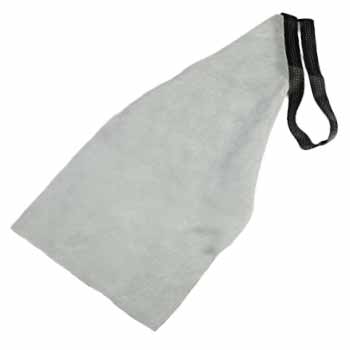

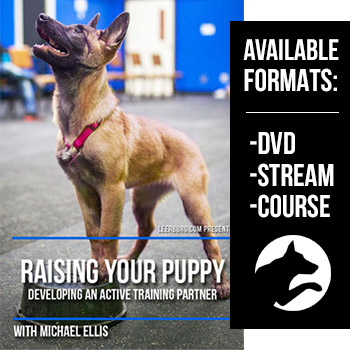
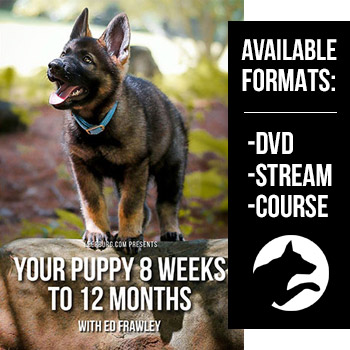
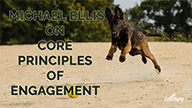

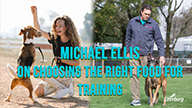
Ask Cindy.